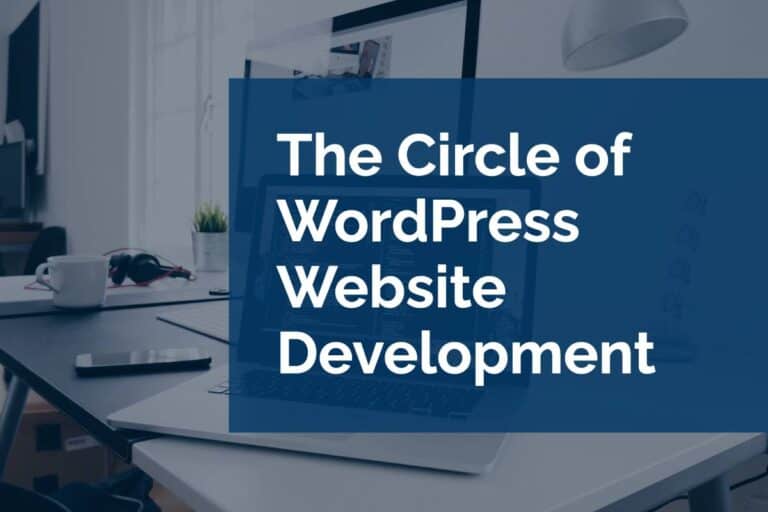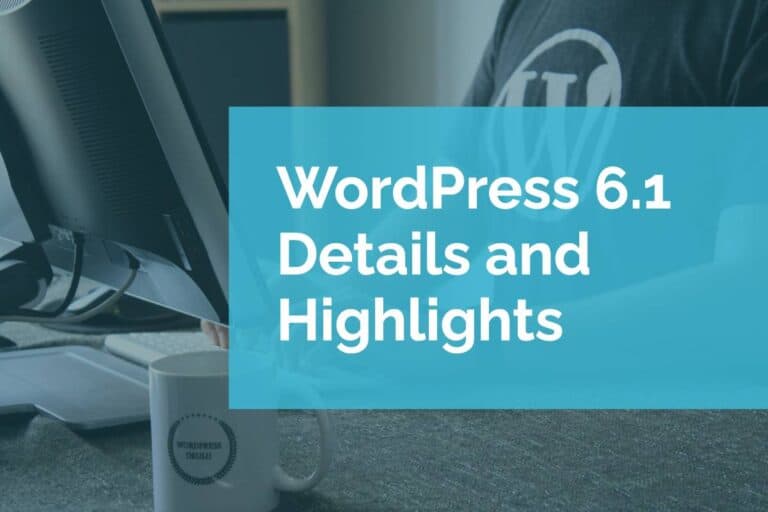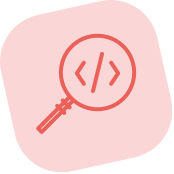A WordPress Development Glossary
It seems like there’s a new term or technology influencing our work every week. Keeping our definitions straight is critical to providing the best service possible. This WordPress development glossary presents a list of some key terms you should know.
Accessibility – A design process that focuses on making sure website content is available and consumable by the widest audience possible. This has a specific focus for users who are differently abled, use assistive devices, or require special considerations. Accessibility is often expressed as a level as outlined by the W3C in their web content accessibility guidelines (WCAG).
Archive – A type of page automatically generated by WordPress that aggregates the entries for a specific post type.
Block Editor – The result of the Gutenberg project. The previous text editor for WordPress has been replaced with the block editor as of WordPress 5.0. Instead of an office like toolbar used to manage content, discreet blocks of content can be dragged, dropped, and added to build out content structure.
Blog – A regularly updated website or page on a website. The word comes from a truncation of weblog. Posts are usually displayed in reverse chronological order.
Category – A predefined taxonomy that can be assigned to a post type. By default, a post is assigned the uncategorized category. See also Tag.
Child Theme – A theme that only contains the files necessary to distinguish it from the original theme. Creating a Child Theme is considered a best practice to make sure that any changes that occur in the parent theme don’t conflict or overwrite any customizations made to the child. See also Theme.
CMS (Content Management System) – A CMS is a piece of software that is used to create and manage digital content. WordPress is a CMS specifically designed to display content on the web.
Comment – Feedback that can be left by a visitor. Comments can be activated for pages or posts, and can be moderated by the site owner. See also Spam.
CSS (Cascading Style Sheets) – A style sheet language that describes the look and presentation of the content markup.
CPT (Custom Post Type) – An alternative post that can be built to define a specific data structure. CPTs mimic the behaviors of posts or pages, an be displayed in reverse chronological order or in a variety of other orders, and have taxonomies associated. CPTs are used to define Repeatable data structures.
Dashboard – The area that an administrator or other website manager roles see and manage a WordPress site from. Colloquially know as “the back end.”
Full Site Editing – The expansion of the Block Editor into areas of the site beyond page content. Essentially applying the concept of blocks to the other templates on the site. This may be a full template or a template part. See also Block Editor.
GPLv2 (General Public License) – The license that WordPress is released under. It allows WordPress to be distributed freely and applies to derivative works made for WordPress.
Header – Usually the topmost section of a web page. The header often contains the logo or name of a website and the navigation for that site. The header is by default its own template part.
Headless – A development methodology whereby the head (the front end of the site) is separated from the body (the back end of the site). Instead of both aspects being provided by WordPress, typically the user experience (head) is built using tools designed to provide a faster experience.
HTML (HyperText Markup Language) – A semantic markup language that forms the basis for describing content on the web.
LAMP – A web development platform that uses Linux as the operating system, Apache as the web server, MySQL as the relational database and PHP as the scripting language.
The Loop – The PHP code that displays the list of Posts (or CPTs) on a page.
Media Library – The structure in the WordPress dashboard that holds images, audio, video and other documents that you can attach to your pages and posts.
Menu – A structure that allows you to navigate to pages or even within a page. There is usually a main Menu that serves as the primary navigation for a website. Additional Menus can be created as needed to fill different functions.
MySQL (Structured Query Language) – A relational database structure that holds the data component of a WordPress site. Communication via PHP allows the HTML and CSS to display this data to users.
Page – A self-contained piece of content on a website. The interconnection between these pages via menus forms the website.
Permalinks – The Permalink is the URL (Uniform Resource Locator) for the Page or Post that it appears on. WordPress allows you to exert control over not only the default display of these links, but also the ability to manually change them on a case by case basis.
PHP (PHP: Hypertext Preprocessor) – An HTML-embedded scripting language that is used to write dynamic web pages. WordPress is built with PHP.
Plugin – A piece of self-contained code that can be installed and activated to add an ad hoc piece of functionality to a site. Plugins make WordPress very extensible.
Post – An individual component for Blog. Posts are time-based, have taxonomies, and are usually displayed in reverse chronological order.
Post Meta – Data that describes and relates to the Post that it is associated with. Many Plugins and customizations store information in Post Meta Data.
Responsive – A methodology for designing themes that allows the display of information of a web page to adapt to the device that is displaying it. This is what helps a website look great on desktops as well as mobile phones.
Role – The level of access and privileges that a user has on a WordPress site. The default roles are administrator, editor, author, contributor, and subscriber.
Sidebar – A section of a web page that displays supporting information to the primary content. Sidebars are often a collection of widgets and can be consistent on several pages. Sidebars are added to a page as template part.
Site Title – This is the name of your site. Many themes will display this title in the header by default.
Spam – Spam is any unwanted communication. It can be generated by an overzealous sales program or bot, or a hacker’s malicious exploit. In the context of a WordPress site Spam is usually seen in the Comments section.
Status – As you are creating pages and posts, you assign them a status. The four built-in status states are scheduled, published, pending review, and draft. As the content takes shape it can pass through each of these.
Tag – A predefined taxonomy that can be assigned to a post. It is common practice to include multiple Tags to a post to help define its content for users. See also Category.
Tagline – The subtitle of your website. This is often used to describe the website’s purpose.
Template – Templates define the structural layout of pages and posts in WordPress. Templates have a hierarchy that defines when and where they are applied.
Theme – A collection of templates, styles, and functionality that define the structure and appearance of a WordPress site.
Theme Customizer – The section of the dashboard where a user can configure display settings for the Theme they are using. The configurable sections of the Customizer change based on the Theme installed.
User – In WordPress a user is someone who logs into the website. Users are assigned roles that determine what items they can change on the site. See also Role.
Widget – A small area of the website that performs a specific function. Each widget has its own structure and many plugins add additional widgets to carry out their purposes. Widgets rely on areas of the page that are created to house them and this will be dependent on the theme installed. Widget application has changed significantly with the Block Editor.
WordPress.org – This is the self-hosted version of WordPress. You install this software on hosting that you maintain. You are able to configure Themes, Plugins, and customize the code as you see fit.
WordPress.com – This is the hosted version of WordPress. You can sign up for an account here. WordPress.com is hosted on Automattic’s servers and gives you access to a predefined set of options to build a website.






